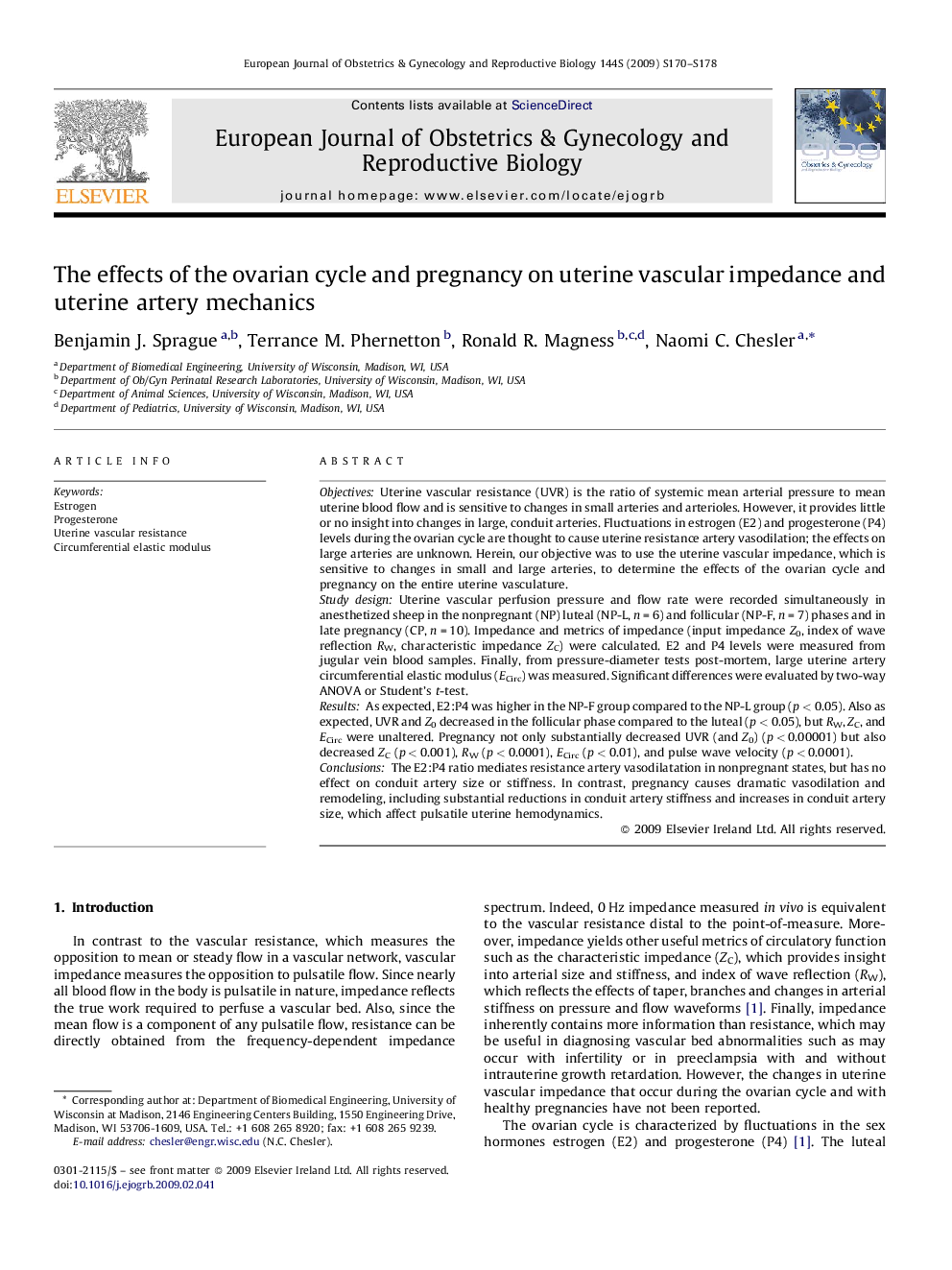| کد مقاله | کد نشریه | سال انتشار | مقاله انگلیسی | نسخه تمام متن |
|---|---|---|---|---|
| 3921027 | 1599866 | 2009 | 9 صفحه PDF | دانلود رایگان |

ObjectivesUterine vascular resistance (UVR) is the ratio of systemic mean arterial pressure to mean uterine blood flow and is sensitive to changes in small arteries and arterioles. However, it provides little or no insight into changes in large, conduit arteries. Fluctuations in estrogen (E2) and progesterone (P4) levels during the ovarian cycle are thought to cause uterine resistance artery vasodilation; the effects on large arteries are unknown. Herein, our objective was to use the uterine vascular impedance, which is sensitive to changes in small and large arteries, to determine the effects of the ovarian cycle and pregnancy on the entire uterine vasculature.Study designUterine vascular perfusion pressure and flow rate were recorded simultaneously in anesthetized sheep in the nonpregnant (NP) luteal (NP-L, n = 6) and follicular (NP-F, n = 7) phases and in late pregnancy (CP, n = 10). Impedance and metrics of impedance (input impedance Z0, index of wave reflection RW, characteristic impedance ZC) were calculated. E2 and P4 levels were measured from jugular vein blood samples. Finally, from pressure-diameter tests post-mortem, large uterine artery circumferential elastic modulus (ECirc) was measured. Significant differences were evaluated by two-way ANOVA or Student's t-test.ResultsAs expected, E2:P4 was higher in the NP-F group compared to the NP-L group (p < 0.05). Also as expected, UVR and Z0 decreased in the follicular phase compared to the luteal (p < 0.05), but RW, ZC, and ECirc were unaltered. Pregnancy not only substantially decreased UVR (and Z0) (p < 0.00001) but also decreased ZC (p < 0.001), RW (p < 0.0001), ECirc (p < 0.01), and pulse wave velocity (p < 0.0001).ConclusionsThe E2:P4 ratio mediates resistance artery vasodilatation in nonpregnant states, but has no effect on conduit artery size or stiffness. In contrast, pregnancy causes dramatic vasodilation and remodeling, including substantial reductions in conduit artery stiffness and increases in conduit artery size, which affect pulsatile uterine hemodynamics.
Journal: European Journal of Obstetrics & Gynecology and Reproductive Biology - Volume 144, Supplement 1, May 2009, Pages S170–S178